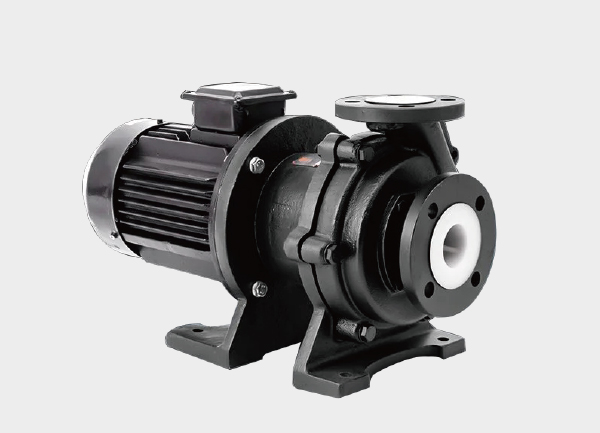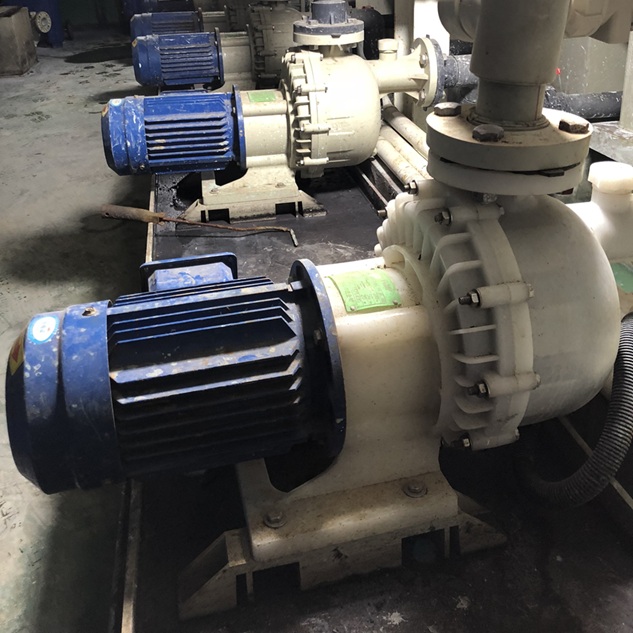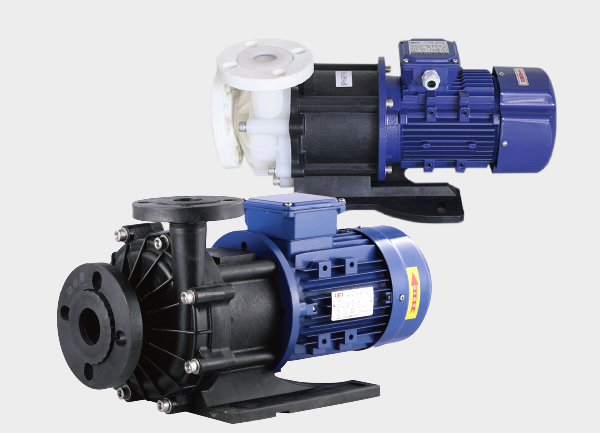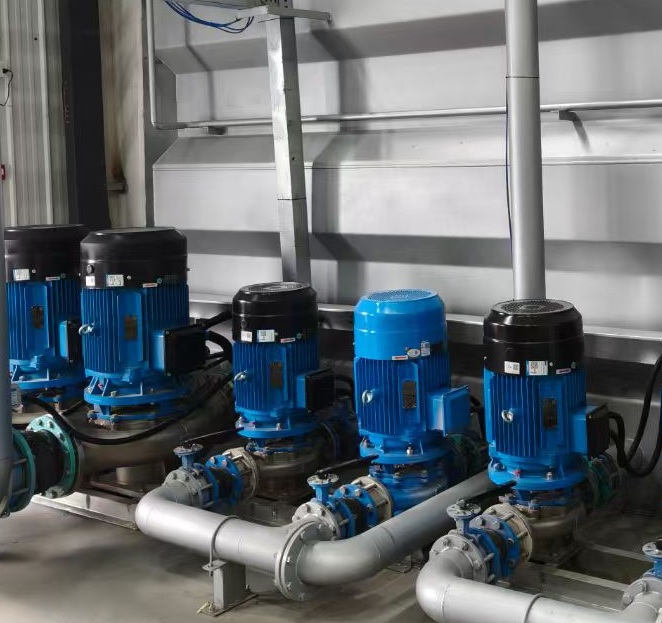Centrifugal pumps are mechanical devices that use a rotating impeller to generate centrifugal force, enabling fluid transfer. They are characterized by simple structure, stable operation, easy maintenance, and broad versatility, making them widely used in agriculture, industry, and construction. This article provides an in-depth overview of centrifugal pumps, covering structure, working principle, performance, applications, installation, maintenance, and common operational challenges.
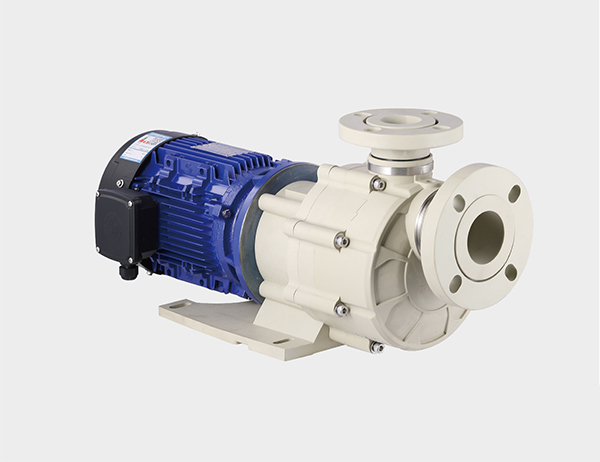
1. Core Structure and Working Principle
Key Components
The performance of a centrifugal pump relies on the coordinated function of its core components, each responsible for fluid propulsion, guidance, or sealing:
Impeller: The “power core” of the pump, consisting of multiple blades. Impellers can be radial, forward-curved, or backward-curved. Backward-curved impellers are commonly used in clean water applications (e.g., municipal water supply) due to lower hydraulic losses and higher efficiency. Forward-curved impellers suit low-head, high-flow scenarios (e.g., farmland drainage).
Pump Casing: Usually volute-shaped, it collects the high-speed flow from the impeller and gradually converts velocity energy into pressure energy while directing water toward the outlet. For high-head applications (e.g., high-rise water supply), multistage volute casings with series-connected impellers can achieve several hundred meters of head.
Shaft and Bearings: Connect the impeller to the motor. The shaft must withstand radial and axial forces, while bearings reduce friction losses. Rolling bearings require regular grease lubrication; sliding bearings are suitable for high-speed, heavy-load conditions in large industrial pumps.
Sealing System: Prevents leakage of pumped fluids. There are two main types: packing seals (low-cost, easy to maintain, for low-pressure clean water) and mechanical seals (highly reliable, used in high-pressure or corrosive media, such as acids or alkalis).
Working Mechanism
The centrifugal pump operates by converting mechanical energy into fluid energy via centrifugal force:
Suction Phase: The motor drives the impeller to rotate at high speed (typically 1450 or 2900 r/min). Fluid at the impeller eye is thrown outward, creating a low-pressure zone at the center. Atmospheric pressure pushes the liquid from the suction pipe into the pump.
Discharge Phase: High-speed fluid reaches the volute casing, where the gradually expanding flow path converts kinetic energy into pressure energy, forming a pressurized flow delivered to the target location (e.g., storage tanks, irrigation systems).
Head Limitations: Total head consists of suction head and discharge head. Suction head is limited by atmospheric pressure (maximum theoretical ~10.3 m under standard conditions; practical limit ~8 m). Discharge head depends on impeller speed, diameter, and blade angle and can be increased with multistage impellers.
2. Performance Parameters and Selection Criteria
Core Parameters
Key performance parameters must be defined before selecting a pump:
Flow Rate (Q): Volume of liquid delivered per unit time (m³/h or L/s). Consider actual demand and allow 5%-10% margin for pipe blockage or flow fluctuations.
Head (H): Energy imparted to the liquid (meters of water). Include elevation difference and pipe friction losses. For example, a 10 m lift with 2 m friction loss requires a pump with ≥13 m head.
Net Positive Suction Head (NPSH): Indicator of cavitation resistance. Ensure NPSHa > NPSHr + 0.3–0.5 m margin. Solutions include reducing pump installation height to increase NPSHa.
Efficiency (η): Ratio of fluid power output to motor input. High-efficiency range typically covers 80%-120% of rated flow; ensure actual operation falls within this range to avoid overloading or low-efficiency operation.
Selection Process
Fluid Analysis: Determine pump material and type based on corrosiveness, viscosity, and solids content:
Clean water: cast iron centrifugal pumps (e.g., IS series).
Corrosive fluids: fluoroplastic (PVDF) or stainless steel pumps (e.g., IHF series, 304 SS).
Solids-containing fluids: wear-resistant impellers (high-chrome cast iron) and wide flow paths (e.g., QW series submersible pumps).
Parameter Calculation: Define required flow and head, calculate pipe friction and valve losses, adjust for high-temperature fluids if necessary.
Performance Verification: Check pump curves (flow-head, flow-efficiency) to confirm operating point lies in high-efficiency zone. Minor adjustments can be made by trimming impeller diameter (≤3%) or using variable frequency drives.
3. Applications and Typical Scenarios
Centrifugal pumps are highly versatile and cover agriculture, industry, and municipal sectors:
Agriculture: Irrigation and Flood Control
Irrigation: High-flow, medium-to-low head pumps (e.g., ISG series) supply water to drip or sprinkler systems, often with variable-frequency control for water-saving.
Flood Control: Pumps such as QW submersible sewage pumps or BA single-stage pumps quickly remove excess water from farmland after heavy rainfall.
Industry: Complex Process Requirements
Chemical Industry: Handle corrosive solutions with fluoroplastic pumps (IHF series) or stainless steel pumps (316L) for acids, alkalis, and intermediates.
Power Industry: Boiler feed water requires high-pressure, high-temperature multistage pumps (DG series), capable of hundreds of meters of head.
Mining: Slurry and mine water require wear-resistant pumps (ZJ series), with high-chrome impellers lasting 3–5 times longer than standard pumps.
Municipal & Civil: Water Supply and Wastewater
City Water Supply: Large-volume, low-noise pumps (Sh series) deliver water to treatment or storage facilities.
Wastewater Treatment: Submersible sewage pumps (WQ series) handle fibers and solids; some models include cutting mechanisms.
High-Rise Buildings: Zone water supply employs standard pumps for low zones and multistage pumps (CDL series) for high zones up to 150 m head.
4. Installation, Maintenance, and Safety
Installation Essentials
Foundation and Alignment: Flat, solid foundation (≥300 mm concrete) to minimize vibration. Coupling alignment tolerance ≤0.05 mm.
Pipe Layout: Short, straight, and wide suction pipes; outlet pipes with check valves and gate valves; maintain slope to prevent air locks.
Installation Height: Calculate based on NPSH to avoid cavitation; example: NPSHr=2 m, pipe loss=1.8 m → max installation height = 6 m.
Routine Maintenance
Inspections: Bearing temperature ≤70°C, minimal seal leakage, vibration ≤5 mm/s.
Lubrication: Rolling bearings every 3000 hours (lithium grease), sliding bearings maintain oil level (e.g., 46# machine oil).
Impeller Cleaning: Monthly or bimonthly for fluids containing debris.
Safe Operation
Before Start: Fill pump with liquid, check motor rotation, close outlet valve.
During Operation: Avoid dry running or overloading.
Shutdown: Close outlet, cut power, drain if long-term stop.
5. Common Faults and Troubleshooting
| Symptom | Possible Cause | Solution |
|---|---|---|
| No flow / low flow | Air in pump, suction leak, clogged/worn impeller, motor reverse | Re-prime, seal suction, clean/replace impeller, correct rotation |
| Excessive vibration/noise | Misaligned coupling, impeller imbalance, bearing damage, loose foundation | Re-align, balance impeller, replace bearing, tighten foundation |
| Overheated bearing | Insufficient/excess grease, grease degradation, worn bearing, misalignment | Adjust grease, replace bearing, correct alignment |
| Severe seal leakage | Worn mechanical seal, aging packing, shaft sleeve wear | Replace seal/packing/shaft sleeve |
| Motor overload | Excess flow, blocked impeller, high-viscosity medium | Adjust valve, clean impeller, select suitable pump |
6. Selection and Usage Misconceptions
Ignoring NPSH → Cavitation damages impeller. Always calculate NPSHa > NPSHr + margin.
Incorrect fluid type selection → Corrosion or premature failure. Choose appropriate material (e.g., PVDF for strong acids, stainless steel for weak acids).
Over-sizing pump → Low-efficiency operation and energy waste. Limit margin to 5%-10%, use variable-speed drives if flow fluctuates.
Neglecting maintenance → Shortened bearing and seal life. Follow regular lubrication and cleaning schedule.
Conclusion: Efficient and reliable operation of centrifugal pumps depends on correct selection, proper installation, and routine maintenance. Understanding pump principles, parameters, and application scenarios ensures maximum service life and economic benefits.



